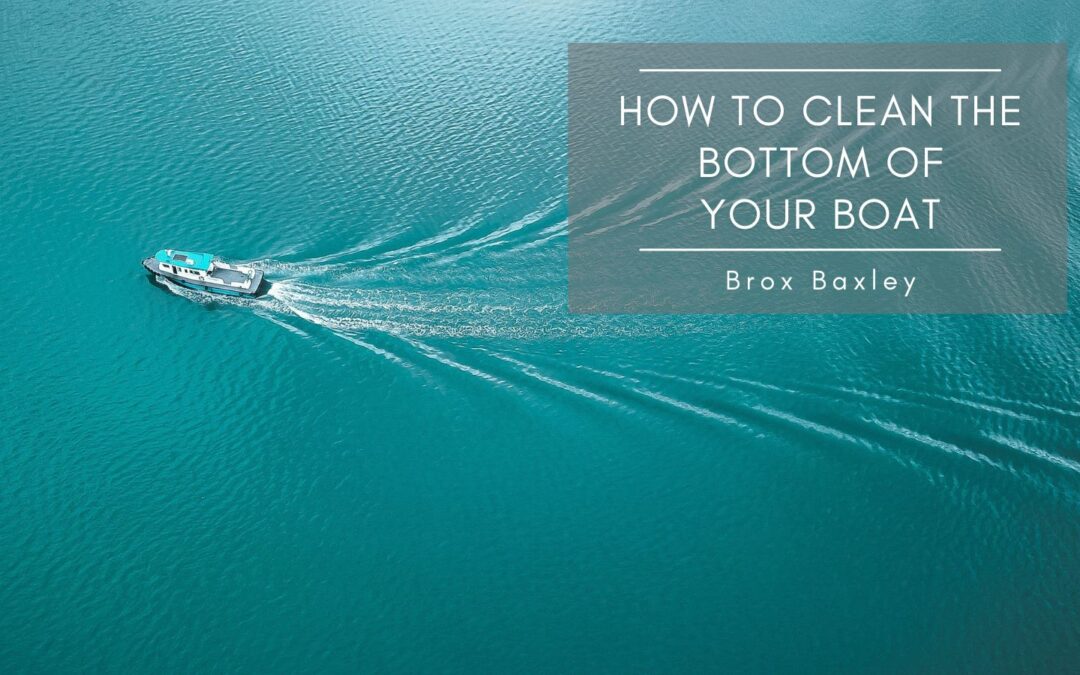Maintaining the bottom of your boat is an essential aspect of maritime care that cannot be overlooked. It’s not just about aesthetics; a clean hull is crucial for optimal performance and longevity. Over time, the accumulation of algae, barnacles, and marine growth can significantly affect your boat’s speed, fuel efficiency, and overall health. Cleaning your boat’s bottom may seem daunting, but with the right approach, tools, and techniques, it can be a manageable and ultimately rewarding part of your boat maintenance routine.
The necessity of cleaning a boat’s bottom arises from its constant exposure to a marine environment, which is teeming with life. Algae, barnacles, and various forms of marine growth adhere to the hull. This accumulation, known as biofouling, can have detrimental effects. It creates drag, reducing the boat’s speed and maneuverability and increasing fuel consumption. Additionally, the marine growth can cause physical damage to the hull, leading to costly repairs and decreased vessel integrity over time.
Historically, boat bottoms were coated with substances like tar or toxic paint to prevent this growth. Today, advancements in marine technology have led to the development of environmentally friendly antifouling paints. However, even the best antifouling coatings are not foolproof and require regular maintenance. The rate of biofouling varies based on factors such as water temperature, salinity, and the boat’s usage patterns. Boats in warmer, nutrient-rich waters typically accumulate growth faster.
Tools and Materials
The right tools and materials are vital for effectively cleaning the bottom of your boat. A basic kit should include a long-handled scrub brush or a pressure washer, environmentally friendly cleaning agents, a scraper for tougher growth, protective gear, and possibly a diving kit for larger boats.
For scrubbing, choose brushes with bristles that are tough enough to remove growth but won’t damage your boat’s finish. Pressure washers can be more efficient, especially for larger boats, but require careful handling to avoid damaging the antifouling coating. When choosing cleaning agents, opt for biodegradable and eco-friendly options to minimize environmental impact.
For larger boats or for more thorough cleanings, a diving kit can be invaluable. This allows for underwater inspection and cleaning, ensuring that every part of the hull is attended to. Using a diving kit requires experience or professional assistance, but it can significantly enhance the cleaning process.
Special attention should be given to the choice of antifouling paint. Some are designed to be scrubbed, while others release biocides slowly and can be damaged by aggressive cleaning. Always match your cleaning methods with the type of coating used on your boat to ensure both effective cleaning and the longevity of the protective coating.
Cleaning Methods
The method of cleaning the bottom of your boat varies depending on the type and extent of growth. For light algae and slime, regular scrubbing with a soft brush and eco-friendly soap is often sufficient. This can be done in the water for smaller boats or after hauling out larger vessels. For more persistent growth like barnacles and mussels, a scraper is necessary. Use the scraper gently to avoid damaging the hull or antifouling coating.
For heavy growth, pressure washing is effective. However, it should be done cautiously, as too much pressure can strip away antifouling paint. When pressure washing, start from the top and work downwards in smooth, overlapping strokes. Pay special attention to areas like the waterline and keel, where growth tends to be more prevalent.
If growth is particularly stubborn, consider using an antifouling paint remover. These are designed to strip away old paint along with the adhered marine life. However, this is generally more invasive and should be reserved for situations where repainting is also planned.
In some cases, particularly for racing yachts or high-performance boats, wet sanding might be necessary. This process smooths the hull surface, improving speed and efficiency, but should be done by professionals to avoid damage.
Frequency and Timing
The frequency of cleaning your boat’s bottom depends on the water conditions and how often the boat is used. As a general rule, boats in warmer, nutrient-rich waters should be cleaned more frequently – typically every two to three months. In cooler waters with less growth, cleaning every six months may suffice.
Timing is also critical. It’s best to clean your boat’s bottom just before peak boating season to ensure optimal performance when it matters most. Additionally, cleaning before long periods of inactivity, like winter storage, can prevent excessive growth and make spring cleaning easier.
Regular inspections can help determine the right cleaning schedule for your boat. Look for signs of excessive drag, decreased speed, or increased fuel consumption as indicators that cleaning is needed. Also, visually inspect the hull whenever possible, especially after storms or when moored in areas with high growth rates. For boats that are heavily used, such as charter vessels or fishing boats, more frequent cleaning might be necessary to maintain performance. On the other hand, boats that are rarely used can sometimes develop more growth due to extended periods of stagnation.

